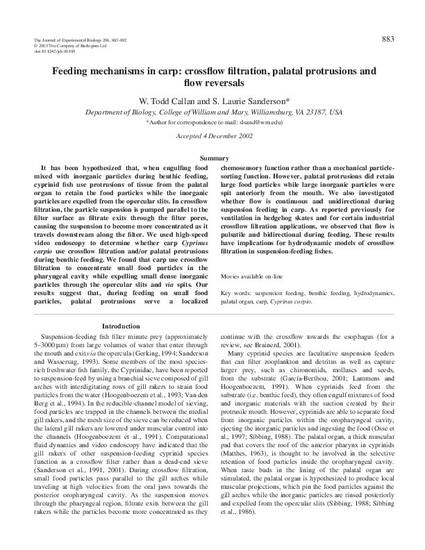
It has been hypothesized that, when engulfing food mixed with inorganic particles during benthic feeding, cyprinid fish use protrusions of tissue from the palatal organ to retain the food particles while the inorganic particles are expelled from the opercular slits. In crossflow filtration, the particle suspension is pumped parallel to the filter surface as filtrate exits through the filter pores, causing the suspension to become more concentrated as it travels downstream along the filter. We used high-speed video endoscopy to determine whether carp Cyprinus carpio use crossflow filtration and/or palatal protrusions during benthic feeding. We found that carp use crossflow filtration to concentrate small food particles in the pharyngeal cavity while expelling small dense inorganic particles through the opercular slits and via spits. Our results suggest that, during feeding on small food particles, palatal protrusions serve a localized chemosensory function rather than a mechanical particle-sorting function. However, palatal protrusions did retain large food particles while large inorganic particles were spit anteriorly from the mouth. We also investigated whether flow is continuous and unidirectional during suspension feeding in carp. As reported previously for ventilation in hedgehog skates and for certain industrial crossflow filtration applications, we observed that flow is pulsatile and bidirectional during feeding. These results have implications for hydrodynamic models of crossflow filtration in suspension-feeding fishes.
Available at: http://works.bepress.com/slaurie-sanderson/26/
